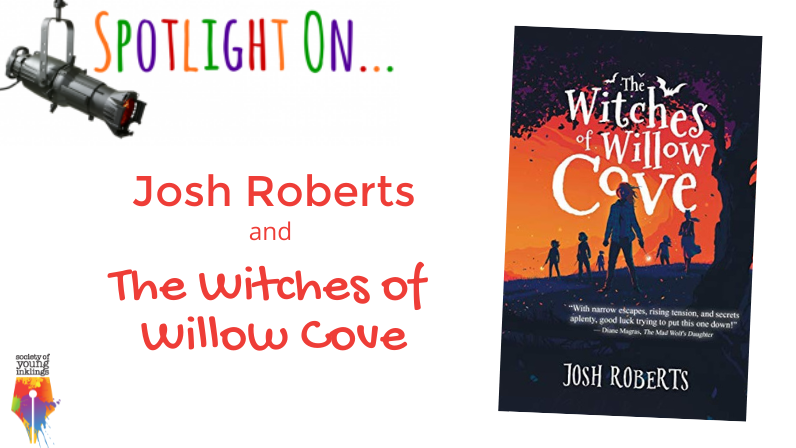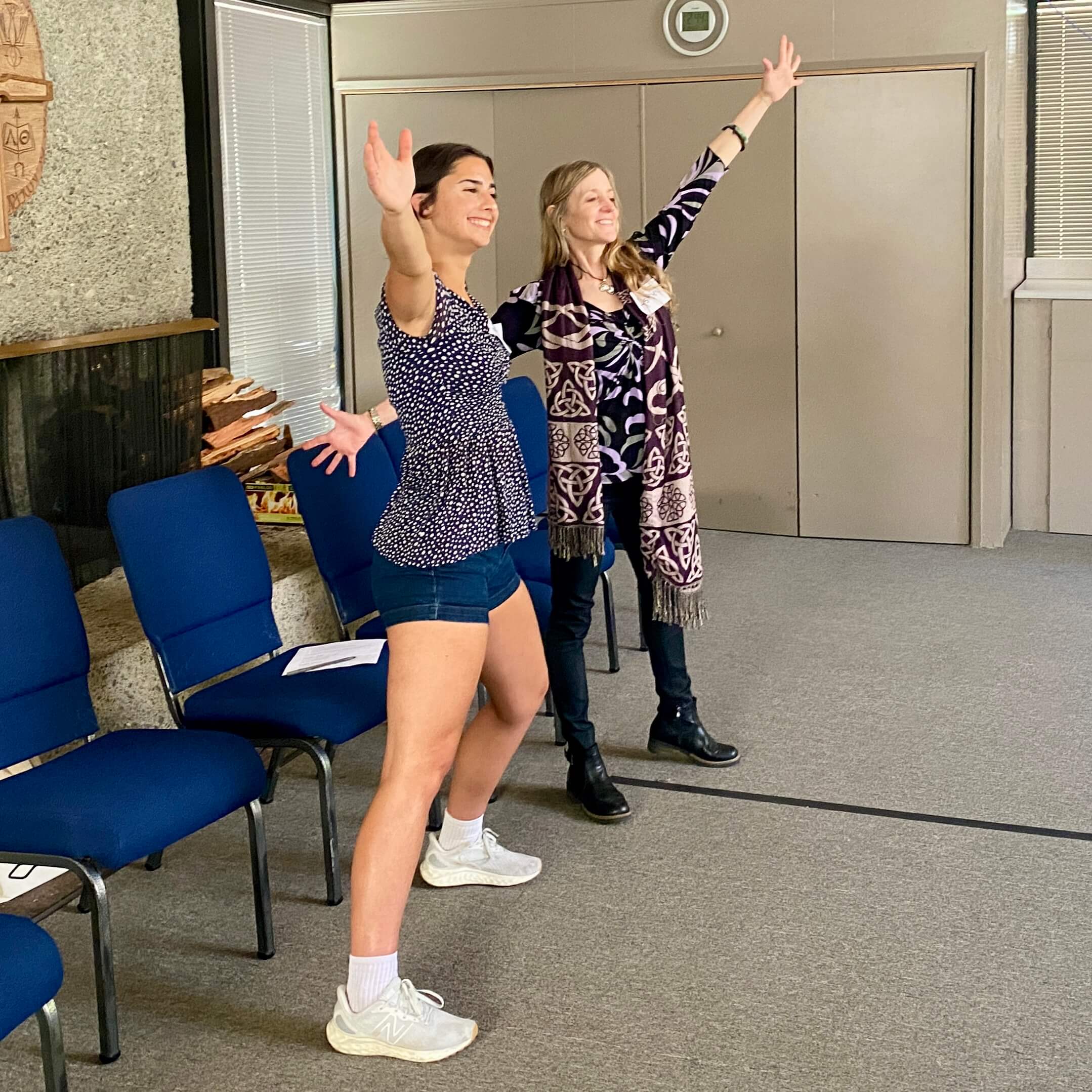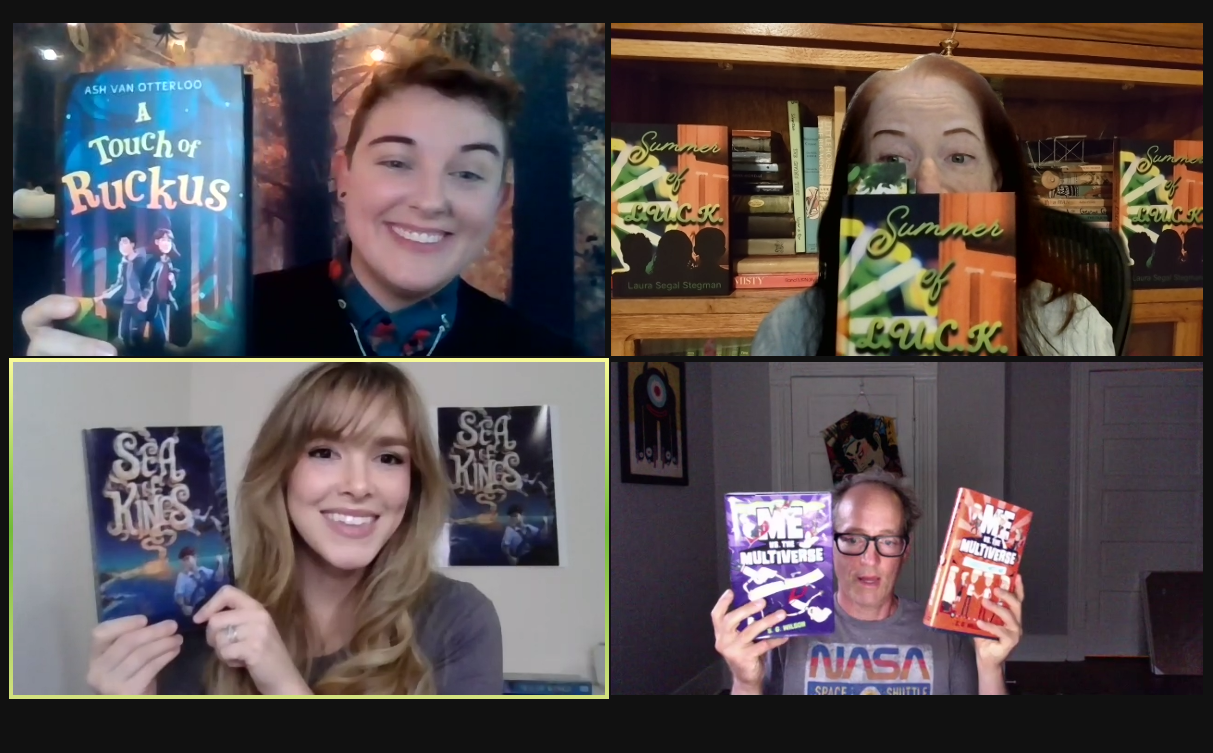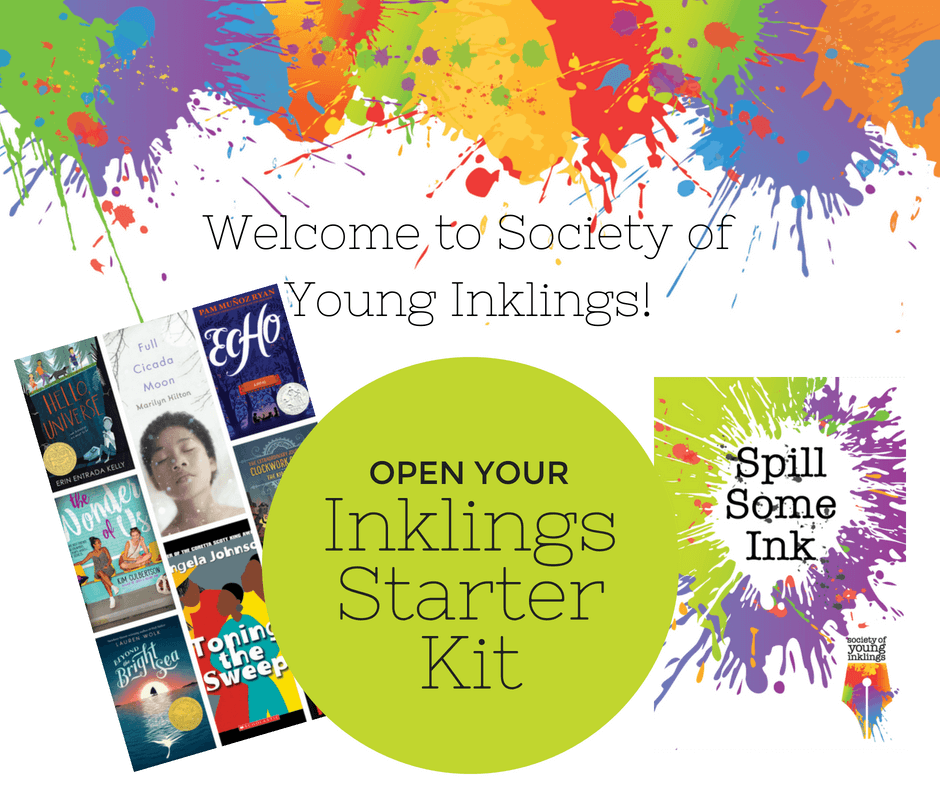For November’s Ink Splat, we spoke to Josh Roberts about his series The Witches of Willow Cove. Josh gives us some insights on writing every day and about writing from multiple points of view.

Writing Challenge
Author Josh Roberts tells us…
As I write, I’m always asking myself, What’s the most exciting thing that can happen right now? And a lot of times, the answer is not something that I had planned on. I don’t want to be limited by what I’ve sketched out should happen because it’s much more fun to discover the story as I go along, and to save room for those unexpected discoveries along the way.
Now, it’s your turn:
Wherever you are in your story, consider some fresh ideas for what might happen next. Ask yourself Josh Roberts’ question: What’s the most exciting thing that can happen right now? This might be action-oriented for a more adventure-driven story or emotionally provoking for a more character-driven story. Brainstorm a couple of ideas, trying to make each one more exciting. Then pick one and write your next scene.

An Interview with Josh Roberts
Did your story start out as a multiple point of view story? Tell us about the challenge of writing from multiple points of view.
It started out just as Abby’s story. I wrote the first chapter, and it was Abby, and then I wrote the second chapter, and it was Abby. And then, because I hadn’t fully outlined where the story was going to go, I wrote a chapter from Robby’s perspective and started exploring the repercussions of how the thing that happens in the first couple of chapters affects him. I didn’t realize at the time what a big decision it was. Because when you write, when you have two main characters, you really have to have two complete story arcs for two different characters. And you have to make sure that you’re giving them both things to do. In my story, which is a mystery, you also have to make sure that your timelines are matching up. And so it became a very complicated thing. But I’ve talked to a number of people who have said that they couldn’t imagine the story without both voices, without both characters.
How did you tailor the level of creepiness or scariness that you wanted for the book?
It all starts with what serves the story, so I didn’t want anything to be gratuitous or gross-out scary or anything like that. I think the creepiness comes down to creating stakes for the characters, putting them in positions where you have to worry about them. Sometimes you worry about their physical safety, sometimes you worry that they’re being manipulated, and sometimes you worry that they’re going to discover something really unpleasant. And there is sort of an inherent spookiness to New England in the fall, with Halloween already starting to show up everywhere, so I wanted to have this built-in, baseline level of spookiness as well. I went for a lot of suspense and a spooky-but-not-scary atmosphere.
Do you have any strategies you use when you’re feeling a little bit low-energy or feeling a bit blocked with your writing?
If something’s not working, or if I’m having trouble getting started, I can go back and tinker with something that I’ve already written to get into the flow of it. Or I can start asking myself questions about things that will happen in the future in the story, what if I change this or that.
For me, it’s mostly about the consistency of living in the story. It’s kind of a cliche to say, “write every day,” because sometimes that’s not practical. But I like to think about my story every day, whether I’m writing it or not. I try to find a time to think about it and live in that world in my head, even if it’s just opening the document, looking at what I’ve written, moving around a word or two, and then thinking, Tomorrow, when I’m feeling more inspired or when I have more time, what would I do with it? The inspiration doesn’t always come, but you can always think about things and push forward a little bit.
What would you tell your younger writing self?
To stop correcting and editing and trying to make it perfect on the first try. I have always been a perfectionist. I feel more comfortable as an editor than a drafter. As a young writer, I definitely did a lot of revising the same stuff over and over again trying to get it perfect, so the advice I would give to my younger self would be to just write the not-great first draft, because then you have something that you can work with. And in the process of writing it, you will discover things that you hadn’t thought about. That will give you more opportunities to make it great as you go because the story will come out and present itself. So just keep writing, and don’t limit yourself by trying to edit as you go.
Do you have a highlight in your life as a writer?
When I find out that my book has resonated with someone, because there’s a big part of me in the story, so it was a highlight the first time I got fan mail from someone who said that they really liked my book. And another person came up to me once and said she wished she had been friends with someone like one of the characters in middle school. To find that other people have enjoyed my book and are moved by it, is the most incredible thing. The highlight for me is that people are reading it, people are enjoying it. That’s worth everything to me.

INKLINGS CONNECT
THE WAY WORDS MOVE US
Join us September 13 and 14 in Portola Valley, CA for our 2nd Annual Inklings Conference!
Featuring a keynote with author Joanna Ho, this conference includes creative writing breakout sessions in our beautiful redwood grove, workshops on using improv to step into a character’s shoes, experiments in word play, a storytelling workshop, and reflective writing to tap into your unique voice.
Quotes Corner
Last month, we hosted a sci-fi panel in the Drafting Workshop. Read on for some quick quotes from our panel of authors.

“On the first draft, it’s better to focus on the pacing of each scene than on the pacing of the entire book, which can be overwhelming to think about. But it will start to come together naturally as you get those scenes together and see how they flow.”
-S.G. Wilson, author of the Me vs. the Multiverse series
_____
“In drafting, I tend to race through a scene. One way that I’m able to adjust my pacing is to provide more sensory detail for the character’s environment. What does it look like? What do they hear? What does it smell like? I have to really imagine a scene as if I’m there.”
-Laura Segal Stegman, author of Summer of L.U.C.K.
_____
“If you’re looking at the whole story, there is a time in the very middle where the character changes a little bit. In the beginning half, a lot of things are going to happen to them. They’re going to have people asking them to join a quest or go to a school that they don’t like or try something new. In the second half of the book, they are actively doing things themselves and being more proactive about changing.”
-Melissa Hope, author of Sea of Kings
_____
“Your surface plot, what’s going on around your character, is always in service of how they’re changing internally. You have to make sure that your plot is moving your character along, and your character is not just magically morphing and changing because the plot is demanding it. It’s like the character is the driver, and the plot is the car.”
-Ash von Otterloo, author of Cattywampus and A Touch of Ruckus
Keep your creativity flowing with our upcoming events!
JULY
- 7/22-25: Make Your Scenes Sparkle Summer Camp
- 7/22: Author Interview with JR Potter (Inklings Membership only)
AUGUST
- 8/6: Author Interview with John Hendrix (Inklings Membership only)
- 8/15: Teen Spilling Ink Writing Workshop (Inklings Membership only)
- 8/26: All Ages Spilling Ink Writing Workshop (Inklings Membership only)
SEPTEMBER
- 9/3: All Ages Spilling Ink Writing Workshop (Inklings Membership only)
- 9/8: 2024 Inklings Book Release Party (Online)
- 9/13-14: The Way Words Move Us Writing Conference in Portola Valley, CA
- 9/19: Teen Spilling Ink Writing Workshop (Inklings Membership only)
- 9/23: Author Interview with Roshani Chokshi (Inklings Membership only)

Thank you to Josh Roberts for sharing with us! Check out his website at willowcove.com.
Josh Roberts writes the kind of middle-grade and young adult novels he always enjoyed when he was a kid growing up in a spooky Victorian funeral home. He is currently at work on the second book in the Willow Cove series, The Curse of Willow Cove.
SPARK YOUR CREATIVITY!
As a bonus gift, we’ll send you an Inklings Starter Kit packed with creativity-sparking fun.


